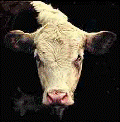Animal Science, Department of

Department of Animal Science: Dissertations, Theses, and Student Research
Date of this Version
12-2011
Document Type
Thesis
Abstract
Finishing cattle performance and mass balance was evaluated with Micro-Aid was fed in diets containing wet distillers grains plus solubles (WDGS) at 35% (DM basis). Micro-Aid is a feed ingredient derived from a Yucca extract which contains saponins, and was included in the treatment diet at 1 g/hd daily in the supplement. There was no difference in performance and carcass characteristics between treatments. In the winter experiment, cattle fed Micro-Aid had a greater amount of OM and DM removed from the pen surface. Micro-Aid in the diet increased the amount of manure N and decreased N lossis in the winter. The addition of Micro-Aid in the diet resulted in no difference in nutrient mass balance during the summer. There was no difference in N excreted in manure or lost via volatilization in the summer experiment.
Supplementing cattle grazing smooth bromegrass pasture with crop residue and byproducts may be a viable option to extend the grazing season or increase carrying capacity. Two experiments (2010 and 2011) were conducted to determine the effect on forage intake of supplementing cattle grazing smooth bromegrass pasture with a byproduct and crop residue blend. Cattle grazed at 1) the recommending strocking rate (7.56 AUM/ha in 2010 or 9.46 AUM/ha in 2011) with no supplementation (CON) or 2) double the recommended stocking rate (15.1 AUM/ha in 2010 and 18.9 AUM/ha in 2011) with supplementation (SUP). In experiment 1 (2010) nonpregrnant, nonlactating cows grazed smooth bromegrass pasture from mid April to mid Spetmeber. Supplemented cows were fed a 35% Synergy and 65% wheat straw mixture daily. The ensiled mixture (46.6% DM) was fed from late April to mid-August and a fresh mixture (30.7% DM; mixed at feeding time) from mid-August to mid-September. In experiment 2 (2011), cows with spring born calves at side grazed from early May to mid-September. A fresh supplement of 30% MDGS and 70% cornstalk blend was fed daily. No differences in performance or diet quality were observed. Consequently, supplement replaced 40% of grazed forage intake in 2010 and 36.3% of forage intake in 2011. Supplementing byproduct and crop residue mixtures can replace forage intake of cattle grazing smooth bromegrass pasture.
Advisors: Galen E. Erickson and Terry Klopfenstein


Comments
A THESIS presented to the Faculty of The Graduate College at the University of Nebraska In Partial Fulfillment of Requirements For the Degree of Master of Science, Major: Animal Science, Under the Supervision of Professors Galen E. Erickson and Terry J. Klopfenstein. Lincoln, NE: December 2011
Copyright 2011 Annie J. Doerr